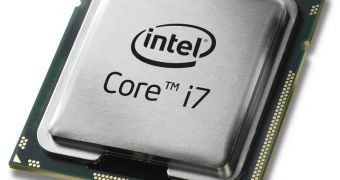Once Intel has moved to Sandy Bridge, the overclocking options that were available to the user were suddenly dramatically diminished. Ivy Bridge only brought worse results, but now the company seems to have decided to improve the situation for the mid-range enthusiasts.
We were unpleasantly surprised by Intel’s decision to use low-quality thermal interface material (TIM) underneath the integrated heat spreader (IHS) on the new Ivy Bridge processors.
This decision alone led to working temperatures that were at least 10 degrees Celsius higher than what could have been if the company had used a higher quality substance.
The same low-quality compound is used on the company’s Xeon processors and this literally left us wondering if Intel will ever manufacture processors with decent overclocking abilities.
We don’t know what TIM the company will use on the new Haswell CPUs and we can only hope that it will get back to fluxless soldering of the HIS directly on the CPU’s top.
The news today is that Intel is reportedly preparing to introduce several new settings that will help the user overclock the CPU easier and with better results.
Haswell will actually support variable DMICLK/BCLK ratios that now are only supported by the high-end desktop (HEDT) LGA2011 platform.
This is a step in the right direction from Intel and we hope that it won’t be the only one.
Right now, the only way to overclock LGA1155 processors is to buy a “K” processor that will allow you to change the multiplier, but the performance results might not be as impressive as a combined overclocking method might offer.
When the user is allowed to choose for itself what BUS frequency and what multiplier offers the best performance jump, overclocking gets back to normal on Intel platforms.

 14 DAY TRIAL //
14 DAY TRIAL //